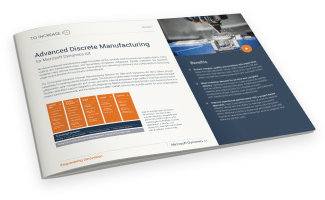Why Does EAM Need to Be a Part of ERP? Here Are Five Reasons!
 Peter van Leeuwen
Peter van Leeuwen
Table of contents
EAM or enterprise asset management is a technologically supported way to organize your assets, enhance their efficiency, and make the most of your asset investment. When you are looking at a scenario where you have to manage and extend the lifecycle of the complete asset portfolio of your organizations across locations, it can become complicated. Imagine having to have a separate solution for managing assets and another one for enterprise resource planning (ERP).
While ERP typically helps improve the overall operational efficiency of the various tasks in your organization with a unified solution, EAM is a solution that helps you manage assets. In this article, we will look at why it is vital to make EAM part of your ERP as that will help you with several aspects, which include:
- Bring down costs and manage risks
- Maximize your return on assets
- Improve asset-based decisions
- Improve the asset usage time
Here are the five main reasons why it makes sense to make EAM part of your ERP:
There are many schools of thought about whether EAM should be a separate application or sync with ERP, with each team debating this matter from their point of view. However, we are going to present to you the five main reasons for you to integrate EAM with ERP:
Better insight into your assets: As you are aware, EAM can provide you with a complete overview of what assets you have, the condition they are in, the time by which they will become obsolete, and other relevant details. This way, you can plan better on the usage, scheduling of maintenance, and reduce downtime. With synchronization of ERP and EAM, you can correlate the impact your assets have on the overall functioning of the organization, including depreciation, capitalization, etc.
Eliminate duplication of tasks: With a disconnect between ERP and EAM, there is a high likelihood that your scheduling of tasks would have an overlap. The confusion could be the result of not having a shared view, which is because you would need to duplicate entries in two systems so that the information is updated.
Maximize the productivity of your assets: There is a considerable capital investment that goes into the purchase of assets, and you need to ensure that the payback is good. For that to happen, you need to schedule, monitor, and control the use of your assets. With the integration of EAM and ERP, you will be able to not only manage the way the assets are being used but also track the financial impact they can have. This way, you can work towards more savings and better usage.
Improve process efficiency: The addition of EAM into your ERP allows you to automate specific tasks, extending the life of your assets. For instance, service and maintenance can be planned regularly during the non-usage periods to ensure production in uninterrupted, and the asset is also maintained in good condition. Checking the state of the asset, planning, inventory management, and job scheduling are just some of the ways you can improve process efficiency.
Enhance use time: Without a proper system in place to monitor the assets (EAM) and the way they are being used in production (ERP); there is a chance that you are not using some assets to the extent they need to be used and overusing others. Sometimes it is just a matter of logistics that is keeping you from optimum usage. The insight into inventory can help you manage service requests and avoid costly breakdowns.
Get an overview of your finances and assets at once: ERP helps you manage and maximize finance, and EAM helps you do the same with your assets. When you combine two excellent solutions, then asset management can help you positively manage finances.


